On July 9, 2010, the BLM issued a press release announcing the results a massive aerial census called the Tri-State Survey. It’s purpose was to count wild horse populations over a two million acre area utilizing a new census method being developed by U.S. Geological Survey (USGS) in partnership with BLM over the last several years.
The methodology uses several observers from different vantage points of the plane (or helicopter as the case may be), silently recording what they see individually and afterwards, the observers determines the reliability of their “sightability” by comparing notes to verifying accuracy of what each observer had seen in relation to what the other observers had seen for a cumulative total. This then becomes the basis for “animals missed” by one observer from another to determine the error rate of each individual observer from the total count.
“This improved population survey methodology…incorporates peer-reviewed techniques that have been used for decades to estimate wildlife populations around the world”.
The methodology uses several observers from different vantage points of the plane (or helicopter as the case may be), silently recording what they see individually and afterwards, the observers determines the reliability of their “sightability” by comparing notes to verifying accuracy of what each observer had seen in relation to what the other observers had seen for a cumulative total. This then becomes the basis for “animals missed” by one observer from another to determine the error rate of each individual observer from the total count.
“This improved population survey methodology…incorporates peer-reviewed techniques that have been used for decades to estimate wildlife populations around the world”.
BLM Press Release #2010-22
July 9, 2010
The direct “raw” counts of wild horses are then fed into a computer modeling software program called Program MARK developed by Gary C. White and Kenneth P. Burnham of Colorado State University. The original paper used for scientific citation outlining MARKs capabilities was developed for a conference in 1997 so I guess this must be the “decade” of peer-reviewed work BLM is now referring too.
In reviewing the literature on Program MARK, it discusses how its parameters were created to estimate populations of wildlife survival rates based on marking an animal (such as a bird band or tag) and “re-encountering” the marked animal at a later date. MARK then incorporates multiple analysis of a variety of factors and data to determine a broad spectrum of potential possible outcomes with a strong focus on survival rates.
Program MARK also seems to be a work in progress as the programmers have been adding additional options and fixing bugs in the software since 1998 with the most recent updates added in June 2010. It is described as “a large, complex program, and in general it is not an application that can be learned by simply browsing the helpfile.” The recommended starting point in beginning to grasp its application is a 800+ page (and growing) online book hailed as the “first step” in learning to use it.
“A statistician cooperating with USGS will analyze the preliminary data obtained during the inventory flights to provide population estimates with a 95 percent confidence interval”
July 9, 2010
The direct “raw” counts of wild horses are then fed into a computer modeling software program called Program MARK developed by Gary C. White and Kenneth P. Burnham of Colorado State University. The original paper used for scientific citation outlining MARKs capabilities was developed for a conference in 1997 so I guess this must be the “decade” of peer-reviewed work BLM is now referring too.
In reviewing the literature on Program MARK, it discusses how its parameters were created to estimate populations of wildlife survival rates based on marking an animal (such as a bird band or tag) and “re-encountering” the marked animal at a later date. MARK then incorporates multiple analysis of a variety of factors and data to determine a broad spectrum of potential possible outcomes with a strong focus on survival rates.
Program MARK also seems to be a work in progress as the programmers have been adding additional options and fixing bugs in the software since 1998 with the most recent updates added in June 2010. It is described as “a large, complex program, and in general it is not an application that can be learned by simply browsing the helpfile.” The recommended starting point in beginning to grasp its application is a 800+ page (and growing) online book hailed as the “first step” in learning to use it.
“A statistician cooperating with USGS will analyze the preliminary data obtained during the inventory flights to provide population estimates with a 95 percent confidence interval”
BLM Press Release #2010-22
July 9, 2010
To summarize my current understanding of BLMs newest incorporation of this decades long peer-reviewed method they have recently begun waving around to try and explain the unexplainable with respect to their historical crazy population estimates is – it’s really just a very complicated computer modeling program the average Joe hasn’t got a chance of sorting out. We are just going to have to take their word for it. Swell….
Yet, sometimes even the most seemingly complicated subjects can be boiled down to the simple basics, so let’s take a look at the numbers USGS and BLM have released so far.
The results of the “raw” direct counts of wild horses found in the Tri-State Survey area were reported by BLM on July 9, 2010 in the following chart:

July 9, 2010
To summarize my current understanding of BLMs newest incorporation of this decades long peer-reviewed method they have recently begun waving around to try and explain the unexplainable with respect to their historical crazy population estimates is – it’s really just a very complicated computer modeling program the average Joe hasn’t got a chance of sorting out. We are just going to have to take their word for it. Swell….
Yet, sometimes even the most seemingly complicated subjects can be boiled down to the simple basics, so let’s take a look at the numbers USGS and BLM have released so far.
The results of the “raw” direct counts of wild horses found in the Tri-State Survey area were reported by BLM on July 9, 2010 in the following chart:

After merely a month and a half of BLM releasing the Tri-State direct count results shown above, USGS and the "cooperating statistician" published Program MARKs results for the Tri-State Survey on August 25, 2010, with just a few, tiny adjustments.
If you compare the two charts, (the direct count numbers along side the modifications yielded by Program MARK), besides noticing a variety of complicated official columns that include coefficient variations and upper and lower confidence levels, there’s couple of interesting numbers that stand out.
The first is, the direct count of the wild horses seen in the Fox Hog Herd Management Area reported in July were adjusted “upward” from 172 to 300 in the August version of the data. No need for complicated programs here, just a little “tweaking” of the supposedly directly counted numbers as suddenly 128 wild horses were moved into the Fox Hog HMA.
The other change to the July direct count numbers occurred between wild horses reported “Outside” the California HMAs, adjusted from 430 in July to 302 in August. However, a little cross referencing between the “CA Outside the HMA” numbers and the Fox Hog numbers revealed the shift between the two perfectly matched the increase in the Fox Hog HMA numbers. In other words, USGS moved 128 wild horses from “outside” the California HMAs to “inside” the Fox Hog HMA and the results put the Fox Hog wild horse population from under their appropriate management level to significantly over it with removals now scheduled for the fall of 2011.

The other thing that the “average Joe” can also deduce from the newly adjusted numbers is, the computer modeling determined only a 98 horse difference between what was directly counted in the raw data and adding estimations for wild horses that were missed by the observers in the plane. This equates to only a 2.3% difference between the direct counts and the added estimates, at least during this particular survey.
“The modeling and analysis to be completed will make adjustments to the preliminary data to account for animals not observed during the flight. The simultaneous double-count/sightability bias correction technique will provide more valid population estimates than the standard uncorrected aerial inventory method.”
If you compare the two charts, (the direct count numbers along side the modifications yielded by Program MARK), besides noticing a variety of complicated official columns that include coefficient variations and upper and lower confidence levels, there’s couple of interesting numbers that stand out.
The first is, the direct count of the wild horses seen in the Fox Hog Herd Management Area reported in July were adjusted “upward” from 172 to 300 in the August version of the data. No need for complicated programs here, just a little “tweaking” of the supposedly directly counted numbers as suddenly 128 wild horses were moved into the Fox Hog HMA.
The other change to the July direct count numbers occurred between wild horses reported “Outside” the California HMAs, adjusted from 430 in July to 302 in August. However, a little cross referencing between the “CA Outside the HMA” numbers and the Fox Hog numbers revealed the shift between the two perfectly matched the increase in the Fox Hog HMA numbers. In other words, USGS moved 128 wild horses from “outside” the California HMAs to “inside” the Fox Hog HMA and the results put the Fox Hog wild horse population from under their appropriate management level to significantly over it with removals now scheduled for the fall of 2011.

The other thing that the “average Joe” can also deduce from the newly adjusted numbers is, the computer modeling determined only a 98 horse difference between what was directly counted in the raw data and adding estimations for wild horses that were missed by the observers in the plane. This equates to only a 2.3% difference between the direct counts and the added estimates, at least during this particular survey.
“The modeling and analysis to be completed will make adjustments to the preliminary data to account for animals not observed during the flight. The simultaneous double-count/sightability bias correction technique will provide more valid population estimates than the standard uncorrected aerial inventory method.”
BLM Press Release #2010-22
July 9, 2010
While I will save questions for the accuracy of the raw count data for the Tri-State area for a later date, I would like to draw everyone’s attention to the BLMs unofficial “fudge factor” that is being slipped into this new, highly touted, state-of-the-art, “more-valid-population-estimate-than-ever-before” public relations campaign phony baloney.
After BLM receives the Tri-State area’s “direct count” data from the July 9, 2010 aerial census, less than a month later they issue a Preliminary Gather Schedule for Fiscal Year 2011 on August 5, 2010, which includes a tentative plan to gather some of the HMAs inventoried in the Tri-State Survey.
Here we watch BLM mushroom the 172 wild horses from the Fox Hog HMA to an estimated 726 – and this was before USGS made the little “tweak” to revamp the estimate to 300 wild horses.
But it doesn’t stop there. The High Rock HMA goes from a direct count of 300 to BLMs “new” number of 747 and Massacre Lakes jumps from 148 to 220 as well. All totaled, BLM reports they are projecting to gather 1,735 wild horses from the High Rock, Fox Hog, Massacre Lakes and Wall Canyon HMAs next fall.
So, I tried to see if there were any way to make BLMs numbers work with real world math and big surprise, no matter what I tried, it just didn’t fly!
First, I totaled the Tri-State wild horse population (just from the July raw count data as BLM had yet to see the results of Program MARKs estimation when they released the Preliminary FY11 Gather Schedule). The results from the survey of the four HMAs were merely 707 wild horses.
So then I padded the “official” HMA populations by adding the entire 430 wild horses the Tri-State Survey cited as “outside CA HMAs” to this total. Yes, all the wild horses from the entire CA area. This brought it up to 1,137 wild horses.
Next, I subtracted what BLM was projecting to gather (1,735 wild horses) from what the Tri-State Survey had counted for these same HMAs (but also included all wild horses reported in the survey as “outside” now totaling 1,137 wild horses).
Then I tried adding a 20% reproduction rate to the original raw count of 1,137 wild horses because next spring will cause populations to go up - but the 20% reproduction rate couldn’t even come close. Okay, how about a 25% reproduction rate? Still not even in the ballpark. The fact of the matter is, the only way BLMs numbers would “jive” is by adding a 52% reproduction rate to the wild horses found in the Tri-State Survey. And don’t forget, BLMs estimate includes foals and weanlings that aren’t even capable of reproducing yet!
The methods BLM is now touting as bringing “more valid” population estimates to the Wild Horse and Burro Program resulted in merely a 2.3% adjustment by USGS and Program MARK. But by the time BLM got a hold of them, populations moved into the realm of pure fantasy.
And can’t ya just hear Salazar now. “Common Congress, ya just gotta believe us and give us the money to keep rounding em up – no questions asked! JUST LOOK AT THESE NUMBERS! Why, the wild horses are just positively overrunning the range! And they are based on the newest, most technologically advanced peer-reviewed census methods available!”
Anybody else wondering what the population of America’s mustangs and burros would really look like if USGS used Program MARK as it was originally intended – to estimate survival rates - but used BLMs removal numbers instead?

July 9, 2010
While I will save questions for the accuracy of the raw count data for the Tri-State area for a later date, I would like to draw everyone’s attention to the BLMs unofficial “fudge factor” that is being slipped into this new, highly touted, state-of-the-art, “more-valid-population-estimate-than-ever-before” public relations campaign phony baloney.
After BLM receives the Tri-State area’s “direct count” data from the July 9, 2010 aerial census, less than a month later they issue a Preliminary Gather Schedule for Fiscal Year 2011 on August 5, 2010, which includes a tentative plan to gather some of the HMAs inventoried in the Tri-State Survey.
Here we watch BLM mushroom the 172 wild horses from the Fox Hog HMA to an estimated 726 – and this was before USGS made the little “tweak” to revamp the estimate to 300 wild horses.
But it doesn’t stop there. The High Rock HMA goes from a direct count of 300 to BLMs “new” number of 747 and Massacre Lakes jumps from 148 to 220 as well. All totaled, BLM reports they are projecting to gather 1,735 wild horses from the High Rock, Fox Hog, Massacre Lakes and Wall Canyon HMAs next fall.
So, I tried to see if there were any way to make BLMs numbers work with real world math and big surprise, no matter what I tried, it just didn’t fly!
First, I totaled the Tri-State wild horse population (just from the July raw count data as BLM had yet to see the results of Program MARKs estimation when they released the Preliminary FY11 Gather Schedule). The results from the survey of the four HMAs were merely 707 wild horses.
So then I padded the “official” HMA populations by adding the entire 430 wild horses the Tri-State Survey cited as “outside CA HMAs” to this total. Yes, all the wild horses from the entire CA area. This brought it up to 1,137 wild horses.
Next, I subtracted what BLM was projecting to gather (1,735 wild horses) from what the Tri-State Survey had counted for these same HMAs (but also included all wild horses reported in the survey as “outside” now totaling 1,137 wild horses).
Then I tried adding a 20% reproduction rate to the original raw count of 1,137 wild horses because next spring will cause populations to go up - but the 20% reproduction rate couldn’t even come close. Okay, how about a 25% reproduction rate? Still not even in the ballpark. The fact of the matter is, the only way BLMs numbers would “jive” is by adding a 52% reproduction rate to the wild horses found in the Tri-State Survey. And don’t forget, BLMs estimate includes foals and weanlings that aren’t even capable of reproducing yet!
The methods BLM is now touting as bringing “more valid” population estimates to the Wild Horse and Burro Program resulted in merely a 2.3% adjustment by USGS and Program MARK. But by the time BLM got a hold of them, populations moved into the realm of pure fantasy.
And can’t ya just hear Salazar now. “Common Congress, ya just gotta believe us and give us the money to keep rounding em up – no questions asked! JUST LOOK AT THESE NUMBERS! Why, the wild horses are just positively overrunning the range! And they are based on the newest, most technologically advanced peer-reviewed census methods available!”
Anybody else wondering what the population of America’s mustangs and burros would really look like if USGS used Program MARK as it was originally intended – to estimate survival rates - but used BLMs removal numbers instead?

East Fork High Rock Canyon
Home of wild horses overrunning the range.
Photo courtesy of BLM.
Home of wild horses overrunning the range.
Photo courtesy of BLM.

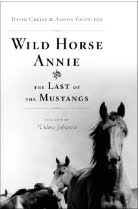








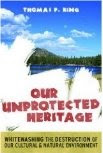



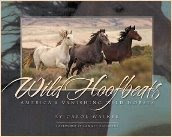




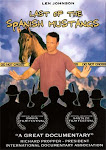





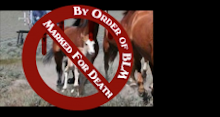

7 comments:
These butchers will continue to come up with mass excuses to exonerate their actions and their self-righteousness beliefs that only THEY know what is going on with the mustangs, because THEY are the ones MIS"managing" them, and have for years!!!! The audacity, stupidity and brashness of those who are supposed to know what they are doing is SO exposed to the rest of the people who know how to count, and can see WHICH animal ACTUALLY does the most damage of the wilderness, and it most certainly is NOT the mustang, any more than it is the fault of the mule deer, antelope, buffalo or anything else that isn't branded by humans. WHY don't they do a count of the Shiras (Alces alces shirasi) Moose that are here along with the rest of the wildlilfe that are hunted....do your "count" on them or the antelope, or Big Horns, Mule Deer, and Mountain Lions and see if you OVER COUNT there, or keep it closer to REAL TIME because you MAKE MONEY OFF OF THEM SELLING HUNTING LICENSES!!! WHY can't you STOP LYING, just because you can't sell HUNTING LICENSES????? Better yet, how about doing this damn count on all of the COWS AND SHEEP YOU HAVE REPLACED THE REMOVED MUSTANGS WITH!!!! I would wager to say NO LESS than a FOUR TO ONE ratio!!!!! One of these days YOU ALL will be brought to your knees for this outrageous treatment and your lies. You are CONSTANTLY being WATCHED, SCRUTINIZED and UNDER A MAGNIFYING GLASS for your ways....EVERYTHING YOU SAY AND DO IS BEING RECORDED and Checked and double checked, and even if it ends up to late for some mustange, There will one day soon be justice for ALL OF THEM!!!!
Cutting the pattern to fit the cloth--AGAIN
How does all this miss getting in front of Congress?
I don't just understand.
My suggestion would be to fax this to sen. Landriue in La. and sk her to present this to the USGS and ask for their comment on the record-if this is the kind of accurate modeling and science they had in mind...Is this the Science we have been looking for or the hybred Frankenstein version of science that BLM is so efficient at trying to shove down our throats?
or.....just count their feet and divide by four
Excellent suggestion, Sandra. I plan to send this to my new Representative. Good way to break him in to what he's in store for from me.
Does everyone know about this petition? It is on the American Wild Horse Preservation Campaign website. BLM took the horses off of the HMA because of a wildfire. They need to put them back where they belong. Petitions needs to be signed by November 22
http://org2.democracyinaction.org/o/6931/p/dia/action/public/?action_KEY=4734
Post a Comment